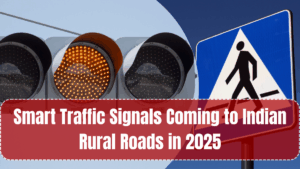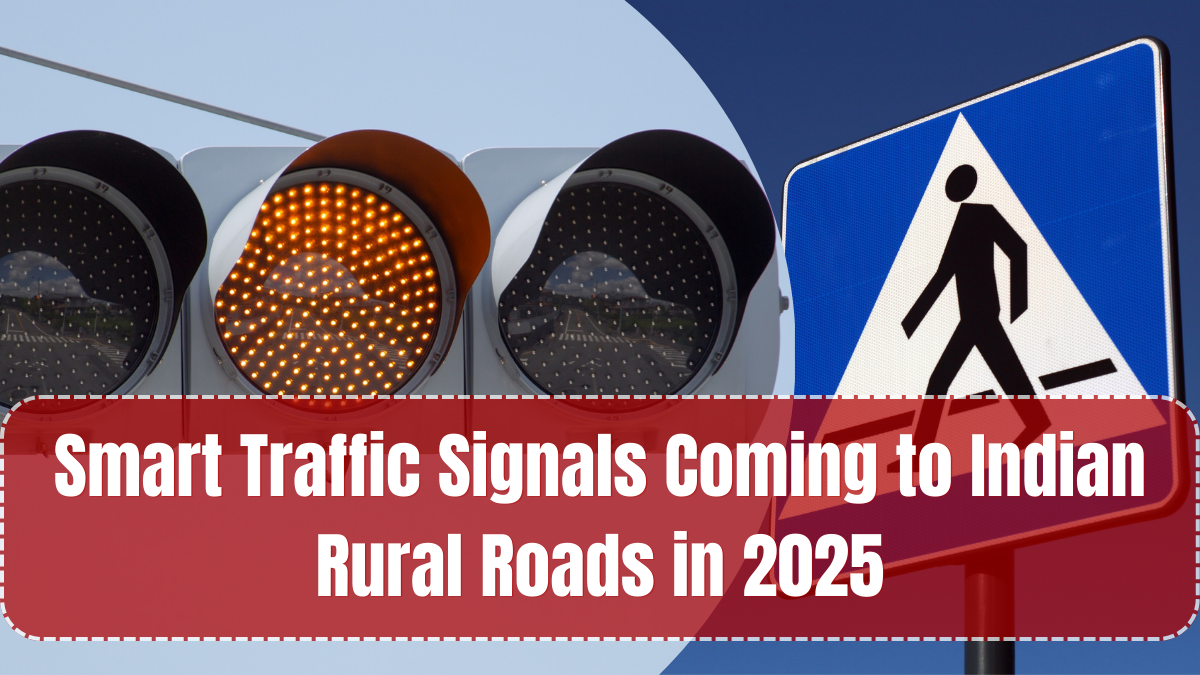In a major leap towards modernizing road infrastructure, smart traffic signals are being implemented across rural and semi-urban roads in India in 2025. These intelligent systems, powered by AI and sensor technology, are designed to reduce congestion, enhance safety, and manage rural traffic patterns more efficiently. For decades, traffic control in Indian villages and tier-2 towns relied on manual methods or basic signal systems. The 2025 rollout changes this scenario completely, bringing urban-grade automation to smaller towns.
This nationwide transformation is part of India’s “Smart Bharat Mobility Initiative,” ensuring even the remotest roads benefit from intelligent transportation solutions.

Where Are Smart Signals Being Installed?
The smart traffic signals initiative is being piloted in several states where semi-urbanization and growing vehicle movement demanded upgraded traffic control. Government agencies, along with local municipalities and private tech firms, have collaborated to install AI-based traffic signal systems across major village highways, school zones, and market intersections.
Top regions where smart signals are installed in 2025:
-
Uttar Pradesh: Pilots in Gorakhpur, Bareilly, and Bulandshahr
-
Madhya Pradesh: Rollout in Indore outskirts and tier-2 cities
-
Maharashtra: Nashik and Nagpur rural zones
-
Tamil Nadu: Salem, Thanjavur, and nearby villages
-
Rajasthan: Ajmer’s rural borders and Jaipur periphery
This effort ensures smoother driving experiences and fewer accidents on busy rural roads.
How AI Powers These Smart Traffic Systems
These smart traffic signals are not just digital lights—they use AI to adapt to real-time road situations. They analyze traffic flow through cameras and motion detectors, changing signal timings automatically based on vehicle density. They also provide emergency vehicle prioritization, reducing response time for ambulances and fire brigades.
AI-based features of smart signals:
-
Real-time traffic monitoring using computer vision
-
Vehicle counting and congestion mapping
-
Adaptive signal timing based on traffic load
-
Smart pedestrian crosswalk alerts
-
Emergency lane clearance for ambulances
-
Traffic rule violation detection with instant alerts
Such tech-powered systems create a synchronized flow on rural roads, minimizing jams and improving overall road discipline.
Benefits for Rural and Semi-Urban Drivers
The installation of smart traffic signals brings a host of benefits to drivers and pedestrians in India’s countryside. Unlike urban areas, rural roads often suffer from poor lane management, unregulated intersections, and accident-prone spots. AI-powered signaling introduces much-needed structure.
Major benefits for rural India include:
-
Reduced accidents at intersections and school zones
-
Better traffic flow in growing tier-2 towns
-
Automated ticketing for traffic violations
-
Increased awareness among local drivers
-
Improved road safety for schoolchildren and senior citizens
As more two-wheelers and passenger vehicles enter rural markets, these traffic signals are helping build safer roads.
Government Policy and Budget Allocation
The central and state governments have allocated significant funds in 2025 for rural smart mobility. Under the National Rural Infrastructure Development Scheme and Smart Village Mission, smart traffic signals are being funded through public-private partnerships (PPPs).
Policy highlights include:
-
₹1,200 crore allocated in Union Budget 2025 for smart signaling in villages
-
States to get matching grants based on coverage achieved
-
Tie-ups with tech firms for signal software, sensors, and maintenance
-
Training of Gram Panchayat workers to manage systems locally
-
Dedicated control rooms in district transport offices
This inclusive approach ensures that rural traffic signals are sustainable and scalable in the long term.
FAQs
What are smart traffic signals?
Smart traffic signals use AI, cameras, and sensors to automatically manage signal timings and improve road safety, especially in high-traffic or sensitive zones.
Where are these signals being used in India?
They are currently being installed across rural roads and semi-urban towns in Uttar Pradesh, Maharashtra, Tamil Nadu, Madhya Pradesh, and Rajasthan in 2025.
Are smart signals helpful for rural traffic?
Yes, smart traffic signals reduce chaos at intersections, prioritize emergency vehicles, and help regulate growing traffic on rural roads.
Do these systems run automatically?
Yes, they are powered by AI and operate based on real-time vehicle data. They don’t need manual operation like traditional traffic lights.
Who maintains the smart signal systems?
Maintenance is managed by local transport bodies and private partners, with Panchayat-level support and tech vendor collaborations in India.
Click here to know more.
